Almeria: The Vegetable Garden of Europe & Home of the Spaghetti Western
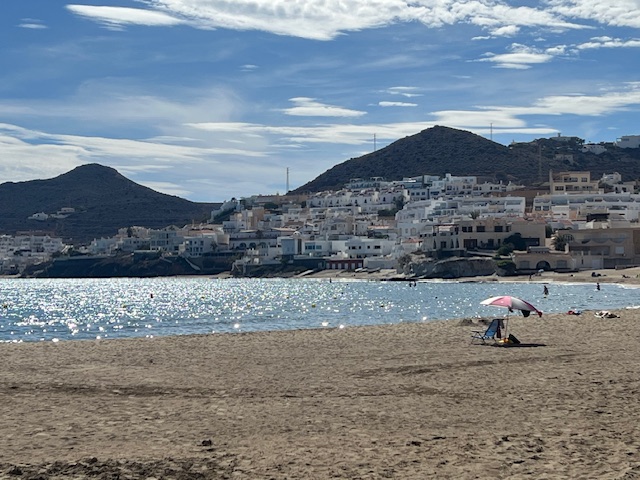
When I booked my Spain painting retreat with Sari Shryack, I was excited to go to Spain but I also had no idea where I was headed. I’m usually in charge of travel planning. Since I wasn’t, I didn’t bother getting bogged down with the details. In fact, I didn’t know how to pronounce Almeria until after I sat next to a Spanish man on my flight from JFK to Madrid.
(It’s Al-Maria: two popular names strung together. I was pronouncing it Ahl-merr-ee-uh)
Almeria Greenhouses
When I gathered with my fellow painters, a few mentioned how surprised they were at the sheer quantity of white greenhouses that were visible from the flight.
A glance out of my window seat I did not have—though I had no seat mate in my second row chair, a Brit from across the aisle, also without a seat mate, gestured me over and proceeded to tell me his life story through the entirety of the ride, over a nice hot tea. I preferred the conversation over a great view, anyhow.
Awaiting the bus to our accommodations, I chatted with the man who was cleaning the airport cafe. He told me today was his last day working there, he was heading back to his greenhouse. Tomatoes, he said with pride.
On our drive to our villa, I got my first peek of the greenhouses. There were so many.
150 Square Miles of Greenhouses!
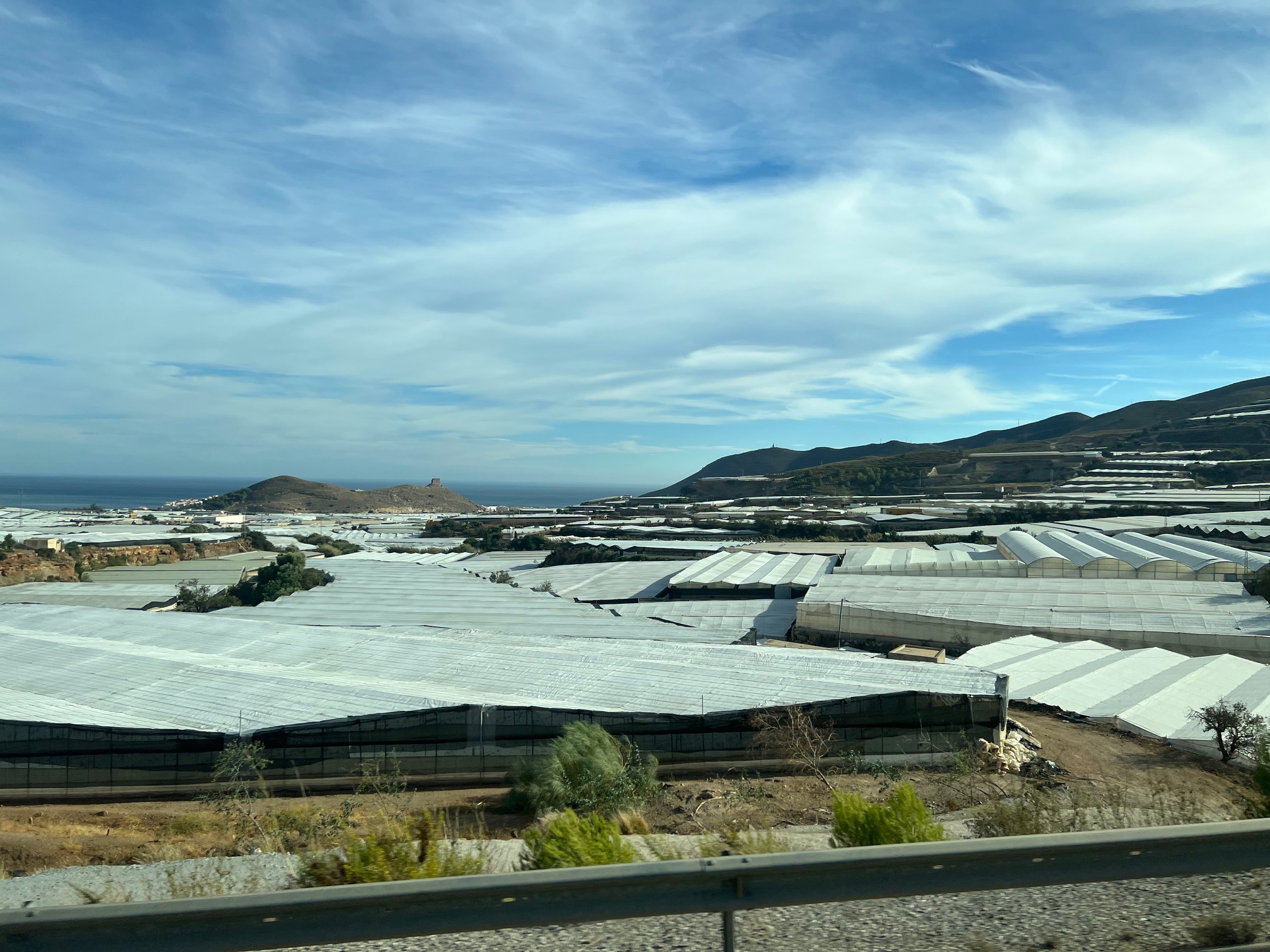
Desert Water
Almeria is referred to as the vegetable garden of Europe, though the climate is that of a desert. How is it so abundant with life?
There are underground aquifers that serve the greenhouses. There are winters where it snows in the area, these years are known as the Year of Wellness. Snow from the mountaintops melts down and makes its way into these aquifers.
Morning Dew
Water in the greenhouses is used strategically: there is a massive amount of dew that forms in the mornings on the walls and ceilings of the greenhouses. The greenhouses are designed with bends in the roofs so that the dew will funnel down directly.
Drop by drop, water is injected into the root of the plants. Not a thing is wasted. When a plant doesn’t use water, there is a channel the water goes down to be recycled.
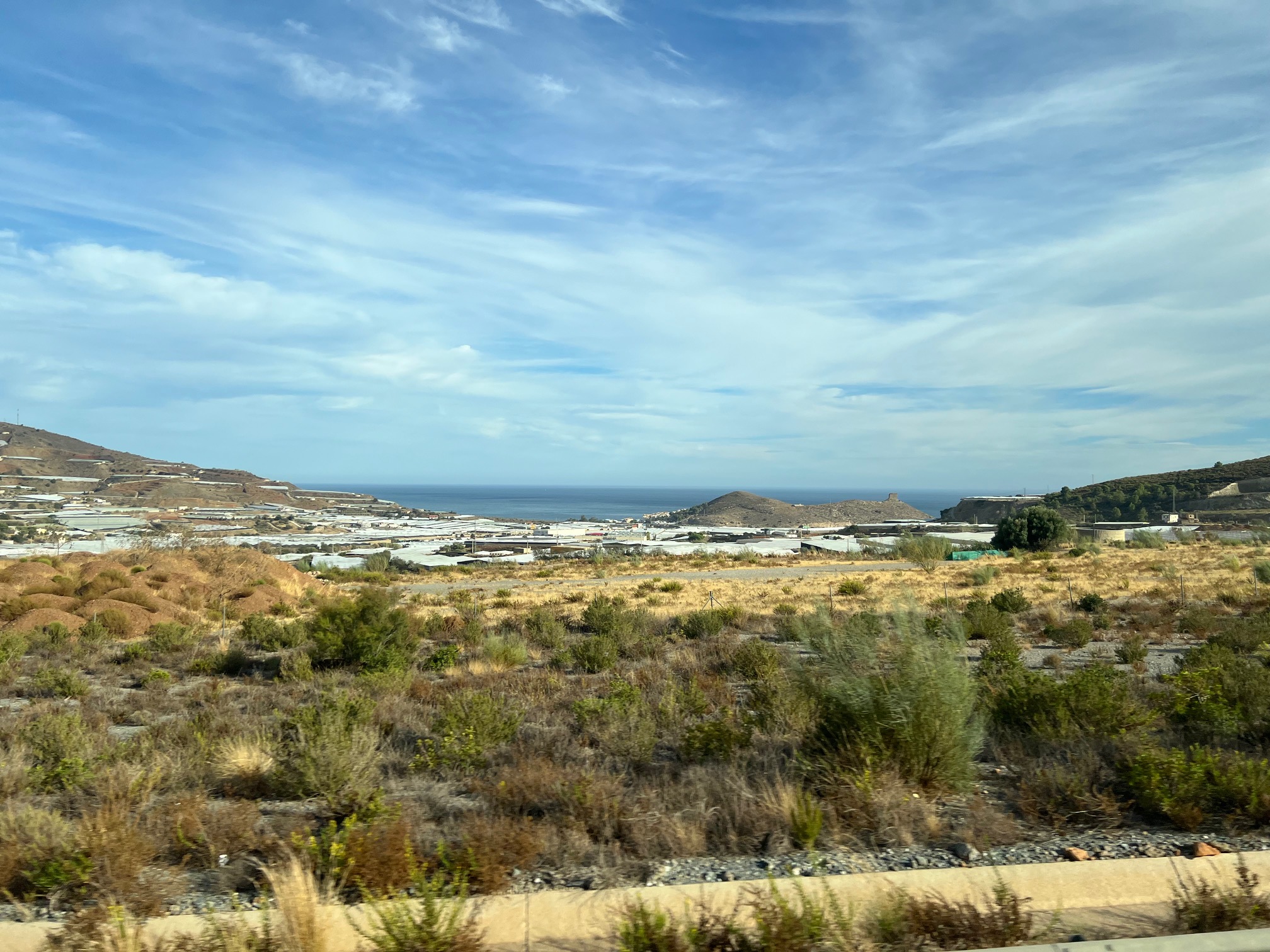
What does your garden grow?
Primarily tomatoes, peppers, zucchini, watermelon, melon, papaya. A local favorite is the “Sweet Bite” pepper. Almería’s greenhouses now produce between 2.5 million and 3.5 million tons of fruits and vegetables per year, enough to make them a major source for people all over Europe. Did you know there’s three times the amount of Vitamin C in a pepper compared to a citrus fruit?
Just as the greenhouses are engineered specifically to use water efficiently, they are designed to maximize space. A single tomato plant can reach fifteen meters–that’s fifty feet! Once the vine grows to the height of the roof, they bend it to come back down, back and forth it winds to reach that length.
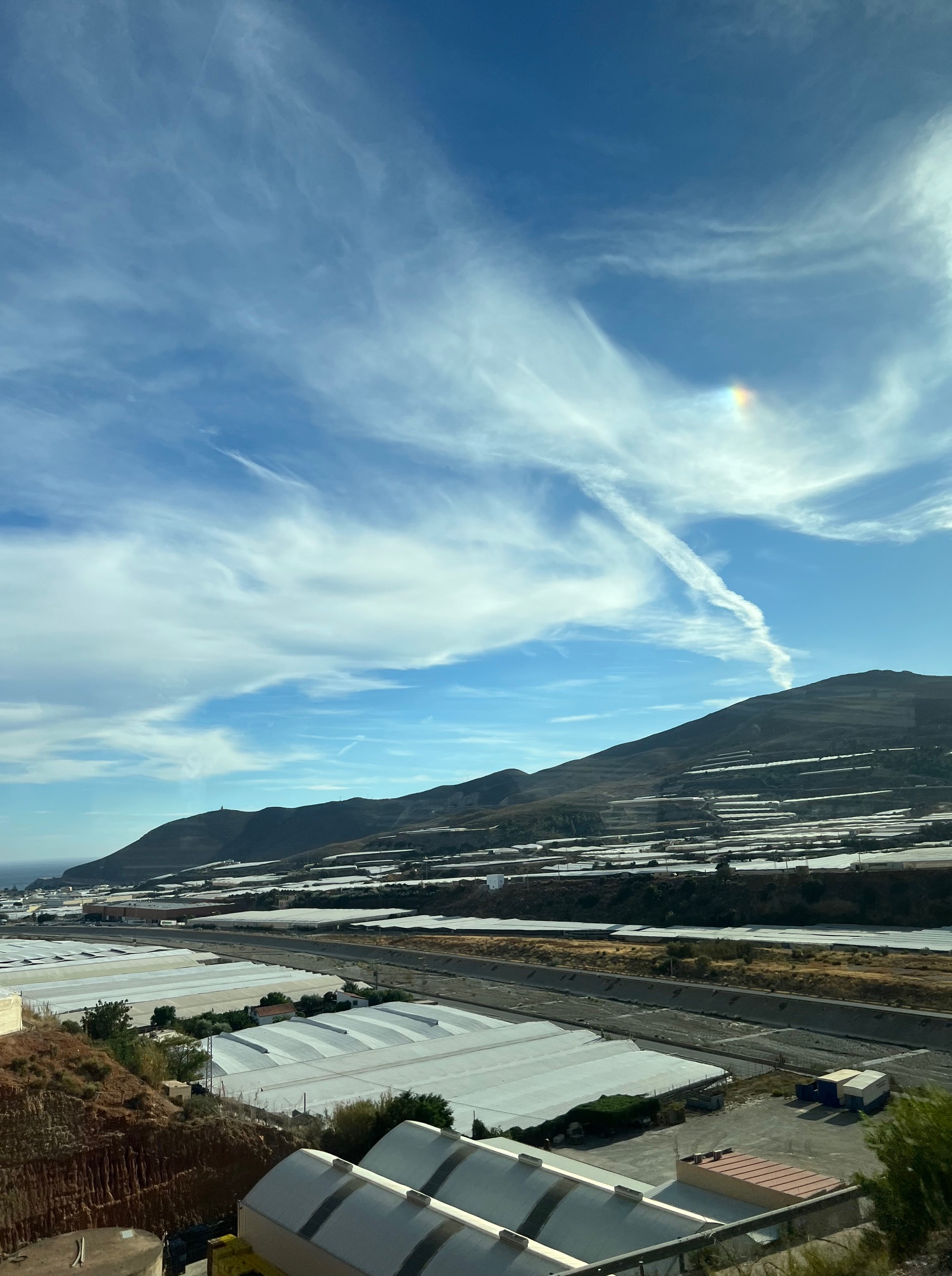
Pesticide Free
Almeria stopped using chemicals on their crops back in the 1980’s. Impressive! Entering and exiting the greenhouse must be done carefully: the pollinators must be kept inside and the bugs that are harmful to the plants must be kept outside. Nets assist in this.
Plastic Dense
The next revolution for Almeria’s Greenhouses is to transform their shimmering sea of polythene to a more sustainable substrate for the greenhouse walls. High winds make it difficult to use biodegradable walls, but they are in development.
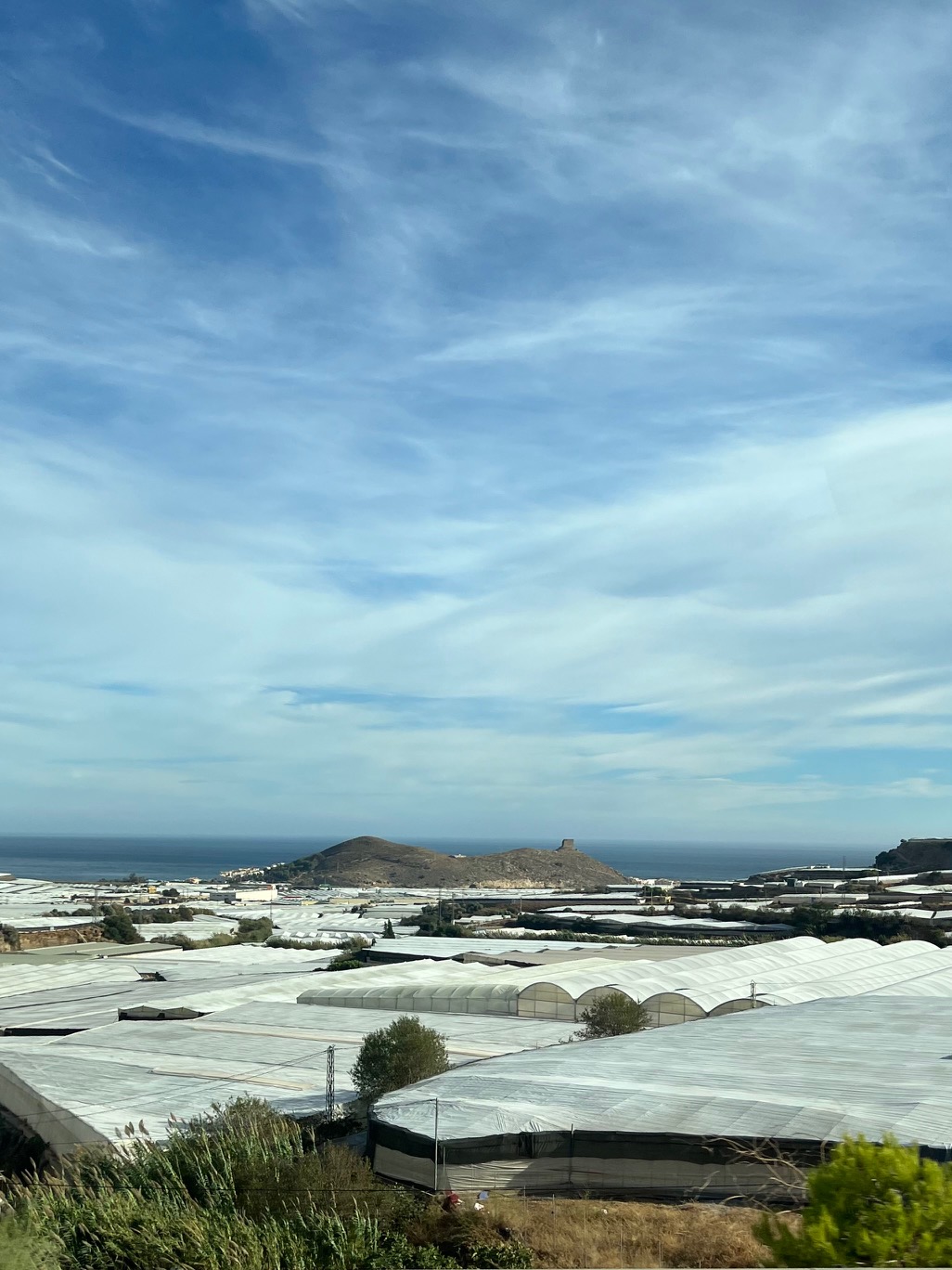
Sunshine
What Almeria lacks in rainfall, it makes up for in sunshine. With an average of 10 hours of sunshine a day, the area gets 3,500 hours of light a year. The duration of daily sunshine is what makes it suitable for growing so many fruits and vegetables.
On the longest day of the year, the Summer Solstice, you can expect to see sunshine at 10 p.m., and blue sky at 11 p.m.!
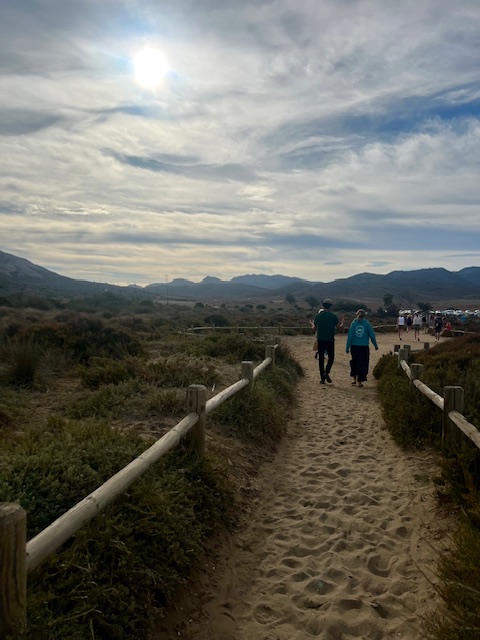
All that sun isn’t just good for growing fruits and veggies—it’s also great for making movies.
Home of Spaghetti Western Cinema
Notable films and shows, western or otherwise, filmed in the Almeria region include:
- The Good, The Bad, and The Ugly (1966)
- Conan the Barbarian (1982)
- Lawrence of Arabia (1962)
- Cleopatra (1963)
- Indiana Jones and The Last Crusade (1989)
- Game of Thrones
- Black Mirror
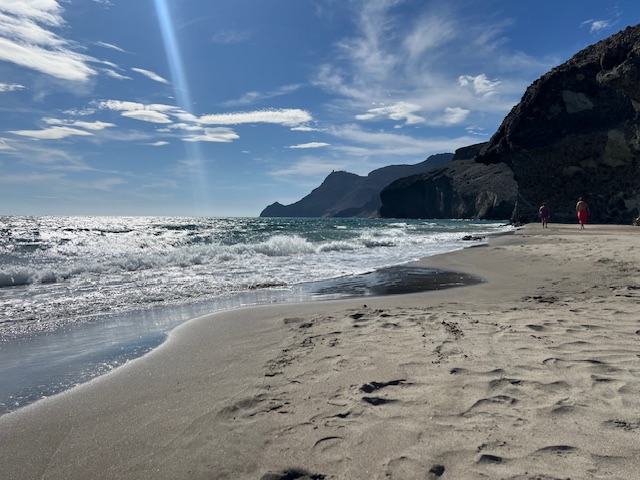
If you thought that Spaghetti Western films were called such because they were filmed in Italy…me too.
Why are they called Spaghetti Westerns if they were filmed in Spain?
All those hours of sunshine made for long daily hours of filming and a quick turn around for each film. They said the films were made so quickly, it was like boiling pasta!
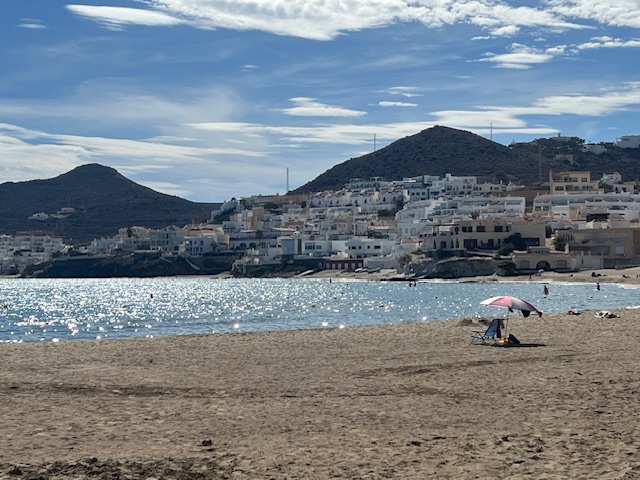
Another reason is because the films were often directed and produced by Italians. They also featured music by the iconic Italian composer Ennio Morricone. For a while, westerns were such a popular genre that every director wanted to have one as a part of their portfolio. They often came to Almeria.
Spaghetti Westerns Preferred
Countries all over the world, including the home to the real Wild West, America, preferred spaghetti westerns to those filmed in the states. The U.S. had rules that disallowed certain features in movies, like film of a bullet exiting a gun or entering a body. They featured many close up and artistic shots and often featured antiheros.
Variety of Landscapes
Another characteristic that made Almeria a prime filming location, other than the sunshine, was the variety of landscapes that were so close to one another. While One would have to drive from Arizona to Nevada for a drastic change in scenery, you can see vast differences in a short drive in this coastal desert in Spain.
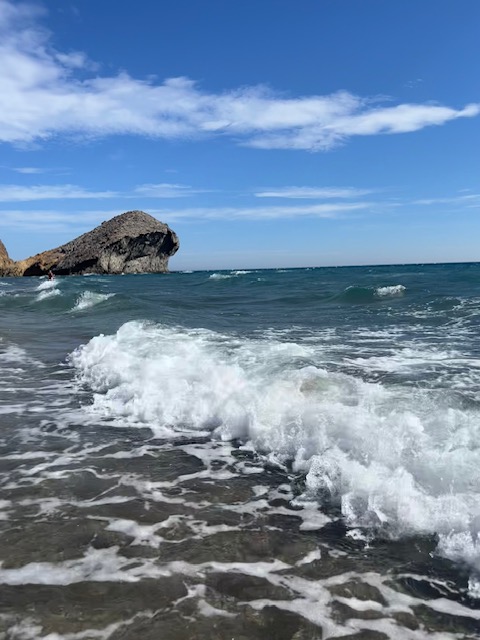
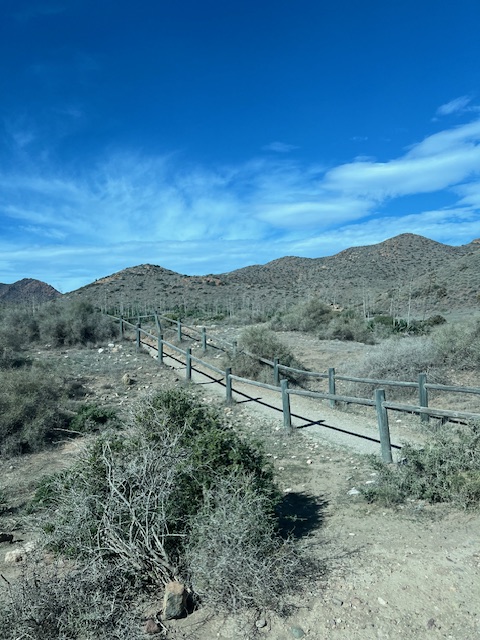
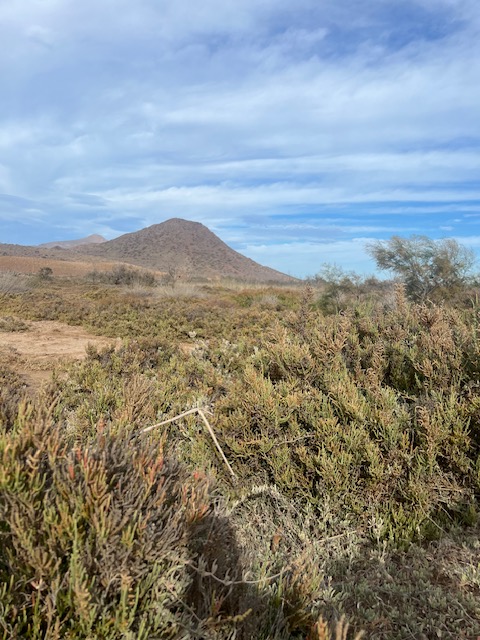
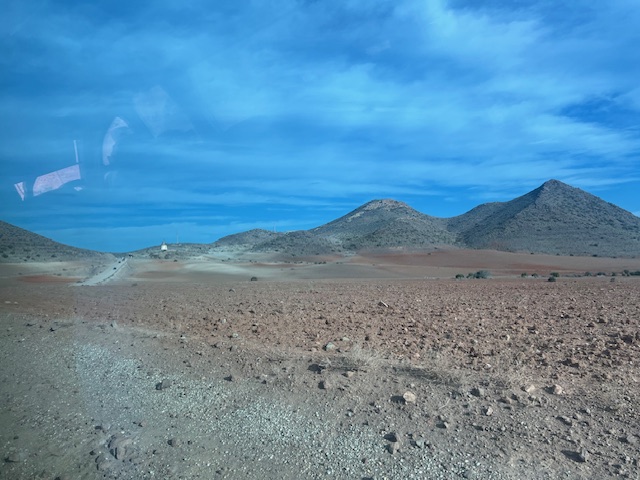
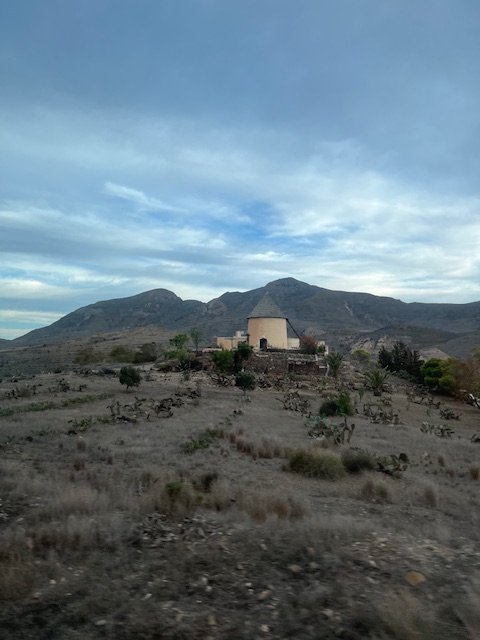
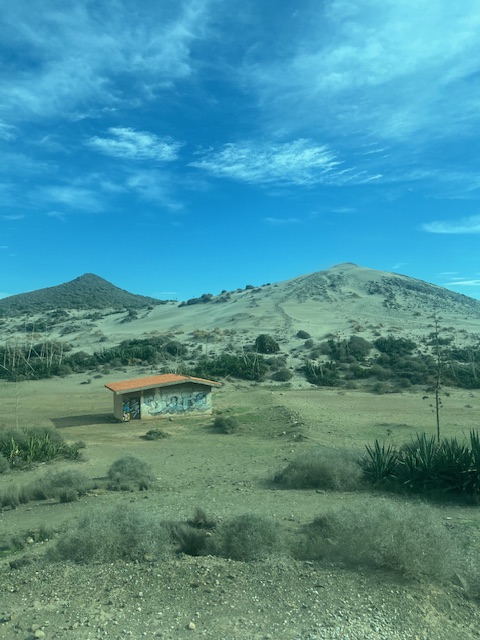
Above you can see a Yucca plant. These were planted here for the films and have completely invaded the natural park. I didn’t have the heart to tell our impassioned guide that those Yuccas are an invasive species, tampering with their biodiversity.
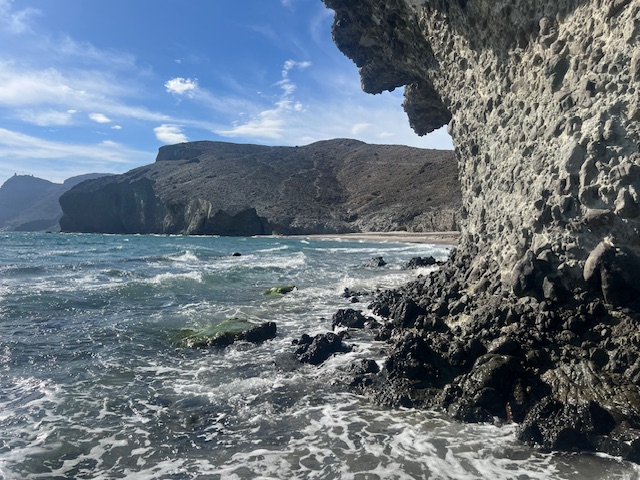
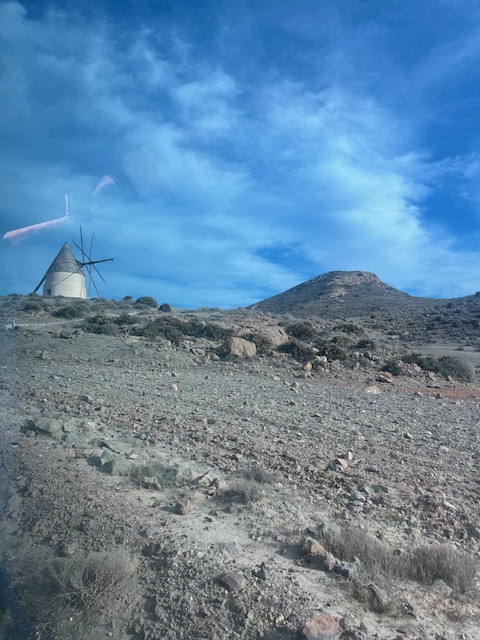
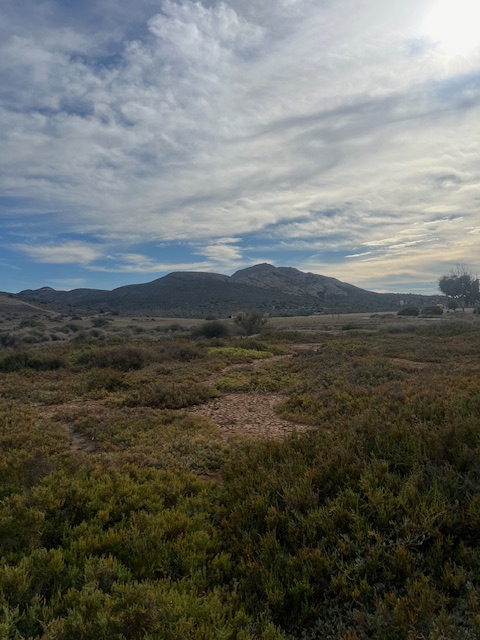
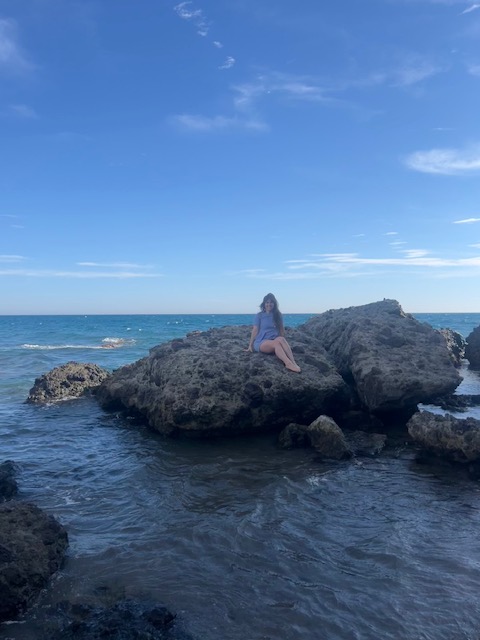
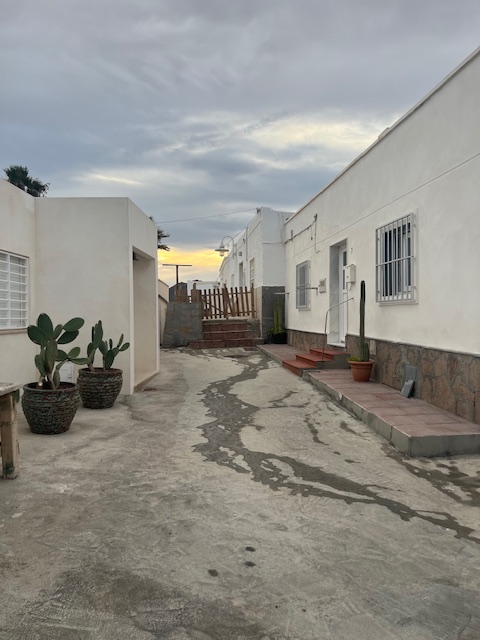
Volcanoes
There are also inactive volcanoes in the Almeria region of Spain. They were active between 14- 6.5 million years ago. Our guide took us to a vista to view the sunset. The winds and sheer height were treacherous combination.
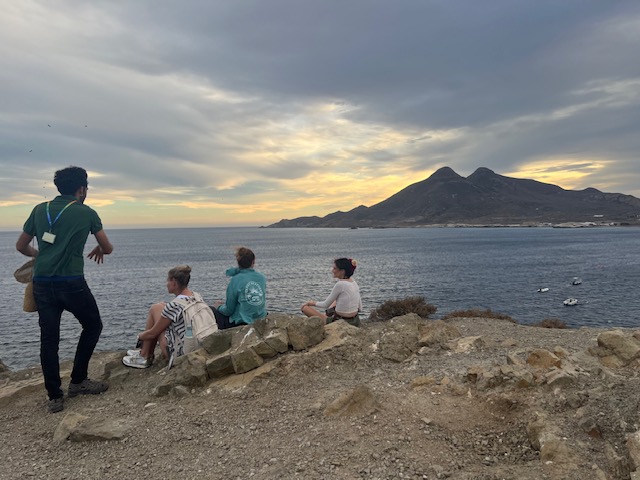
It was from this height that I took this photo.
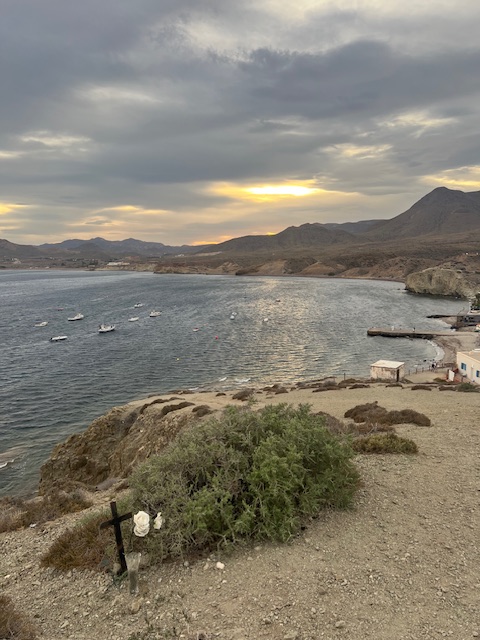
I assume someone stood too close to the edge of where we stood, and someone who loved them left this memorial. I walked over and blessed the spot, thought of who it could have been, how hurt the people who loved them must have felt, as the sun went down. The person lost is not forgotten, this memorial stands as a warning, a protector for all others. We then noticed off in the distance, on the same pier we had recently stood, a couple was taking wedding portraits.
In this photo, there represents ends, beginnings. A sunset is a reminder that every new beginning is some other beginning’s end. There is life, union, death, rebirth–a cycle we cannot escape.
[…] The second half of the day we were off to a guided tour of Cabo de Gata. Our tour guide was passionate with a wealth of knowledge, so that receives a post of its own: Almeria: The Vegetable Garden of Europe and Home to the Spaghetti Western. […]